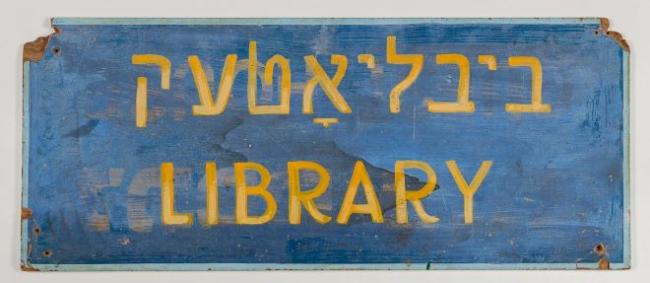Weekly Reader (From the Archives): Jewish Summer Camps
In continuing with our summer theme from last week, we’re revisiting a Weekly Reader from the archives about Jewish summer camps, with a few new selections from our collections.
Like many American (or in this case, Canadian) Jews, I have fond memories of summer camp. Indeed, few experiences are so thoroughly American, and so thoroughly Jewish, that it’s difficult to tell where one ends and the other begins. In popular culture—think of movies like Wet Hot American Summer—the entire summer camp experience is virtually coded as Jewish, though surely there must be a few non-Jewish camps out there as well. And it’s not like there is just one variety of Jewish summer camp—from camps affiliated with religious denominations, to secular institutions, to even, yes, Yiddishist outfits, Jewish camps have come in all sorts of flavors. And given that camping has been such an integral part of the American Jewish experience, it’s no surprise that it’s well reflected in our archives. Here are a few of the gems.
—Ezra Glinter, Senior Staff Writer & Editor
Dove of Peace

If you talk to American Yiddishists of a certain age, you’ll find that their summer camp experiences were mostly defined by one place: Camp Boiberik, in New York’s Hudson Valley. Shortly after Boiberik closed in 1979, the Yiddish Book Center, then in its earliest days, took in a treasure trove of its books and artifacts, including a hand-embroidered piece that hung for decades in the dining room, and is now on display in our permanent exhibition, Yiddish: A Global Culture.
Traces of Boiberik

Speaking of Camp Boiberik, this sign—which is also now on display in Yiddish: A Global Culture—once lived in the camp’s well-stocked biblyotek (Yiddish library). Some of the several thousand volumes of books that were once housed in the camp’s library can still be found on the Center’s shelves. Learn more about Camp Boiberik’s history and other ephemera from the first Yiddish summer camp in a From the Vault article by Sonia Bloom, former Center fellow and current Yiddish Education Specialist.
New Identities

If there’s someone who knows something about Jewish summer camp it would be Riv-Ellen Prell, a professor at the University of Minnesota who has literally written the book on the subject. In this episode of The Shmooze podcast she joins us to talk about how the activities at Jewish summer camps in the United States in the 1950s and ’60s—from religious practice to outdoor adventuring—were geared toward creating a new kind of Jewish identity in the postwar period.
Summer Awakening

First, get your mind out of the gutter. Second, read this poem by Esther Shumiatcher-Hirschbein, a Belarusian-born and Calgary-raised Yiddish poet who eventually made her home in Los Angeles. “Zumer-Leb” (“Summer Awakening”), which describes the city’s rich urban flora, was first published in Kheshbn (Reckoning), the literary journal of Los Angeles’s Yiddish Culture Club.
Writers’ Retreats

Summer camp isn’t just for kids. For Yiddish writers in New York, getting away in the summer meant going to the Catskills, where they could gather and create in a more relaxed and playful atmosphere. In a 2014 interview with the Yiddish Book Center’s Wexler Oral History project, screenwriter Dan Opatoshu, grandson of Yiddish writer Yosef Opatoshu and son of actor David Opatoshu, recalled how his grandparents would rent a cottage every year in upstate New York, together with playwright H. Leivick and poet Aron Glantz.
